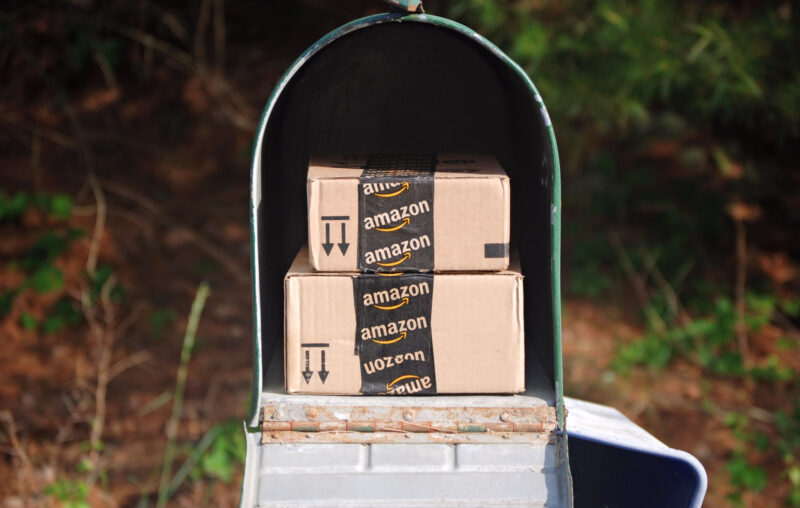Delivering on the Promise of Platforms

Platforms deliver on promises, and that’s why they exist. Platforms don’t sell anything on their own, but instead sell connections. That’s been true for a long time, but in the past 25 years the picture has come into sharp focus.
Imagine it’s 1997. Let’s compare two companies: Walmart and Amazon. Walmart is the largest employer, and largest retailer, in the US. Amazon is…well, in 1997 you’ve never heard of Amazon. It was a bare-bones online book seller, just three years out from its 1994 founding.
Whose stock would you buy? If you are like me, you would have agreed with the self-appointed geniuses in the Harvard Business School class Amazon’s founder talked to that year (described in The Everything Store):
In early 1997, Jeff Bezos flew to Boston to give a presentation at the Harvard Business School. He spoke to a class taking a course called Managing the Marketspace, and afterward the graduate students pretended he wasn’t there while they dissected the online retailer’s prospects. At the end of the hour, they reached a consensus: Amazon was unlikely to survive the wave of established retailers moving online. ‘You seem like a really nice guy, so don’t take this the wrong way, but you really need to sell to Barnes and Noble and get out now,’ one student bluntly informed Bezos.
Brian Birtwistle, a student in the class, recalls that Bezos was humble and circumspect. ‘You may be right,’ Amazon’s founder told the students. ‘But I think you might be underestimating the degree to which established brick-and-mortar business, or any company that might be used to doing things a certain way, will find it hard to be nimble or to focus attention on a new channel. I guess we’ll see.’
The smug student was right, in every unimportant sense. Walmart — and Barnes and Noble, for that matter — both had distribution systems and a physical presence to deliver products cheaply in many local areas; all the big guys needed was a website. How hard could that be?
Amazon, by contrast, had nothing except a web site. Mr. Bezos would be obliged to build a supply chain, a distribution network, and enough of a brand name that sellers and buyers would even consider looking at their web site in the first place. I would have agreed with the student, in 1997 it was time for Bezos to sell for what he could get.
All of which tells you that I saved $250,000. In 1997, I was already — for free! — as much of an idiot as someone who wasted a quarter-million dollars to pay for tuition at Harvard Business School. Walmart survived, but not without losing a lot of market share to Amazon; Barnes and Noble is also surviving, at a smaller scale. Amazon, on the other hand, is the second largest retailer in the world, and in terms of stock value is worth more than Walmart, by quite a bit, even after a sharp decline in the stock’s value in 2022.
The mistake of outsiders was to see Amazon as a bookseller; since books were a dying business (not true, actually), having a web site to sell books had limited upside at best, even if Amazon could survive against the market power of Barnes and Noble and the other bookstore behemoths.
What Amazon was — and Jeff Bezos saw this from the beginning — was a company that sold connections. Sellers could “go there” to sell, and buyers would “go there” to buy. This kind of two-sided market is the heir to the success of the first truly virtual platform: the Sears catalog. It was on paper, rather than online, but Sears didn’t sell anything directly; it sold virtual space where buyers and sellers could find each other. The key advantage Sears possessed was that the company provided delivery: Richard Sears was a railroad agent, and knew how to arrange the movement of products. it had been a railroad company, not a retailer. The catalog was a way of using fast delivery as a substitute for the expense, and localism, of a brick and mortar store. Without delivery, even a store in a large city only had an effective marketing radius of 20 or 30 miles, but with delivery, the size of the market could easily be regional, and later national and then international.
Platforms: Delivering on the Promise of Reduced Transaction Costs
The reason it is important to tell this story at some length is that it can prevent us from making the same mistake that was once understandable, from the perspective of 1997. Very few people had the ability to recognize that “platforms,” virtual spaces that create two-sided connection markets, would prove so flexible and adaptable.
But now we know better. Amazon was not a threat (just) to booksellers; it was a threat to Walmart and other brick and mortar businesses, because Amazon sold connections. Now we are seeing the next iteration, as Uber begins to realize its potential as a platform. Uber has been thought of as a company that sells rides, but that’s not true, not even close. Uber sells connections, just like Amazon. The difference is that the potential for delivery is literally built-in for Uber, an intrinsic part of their business.
Yes, Uber can deliver human beings to a destination, and it will continue to do that. But Uber can deliver almost anything; the business model is scalable and expandable. As I argued in Tomorrow 3.0, it is easy to imagine Uber adding pages for power tools, food delivery, and kitchen appliances to be delivered and picked up.
Okay, I was messing around. The food-delivery part is already here. Uber has just revised its website, in fact, to put food delivery on a par with what has been its core business, ride-sharing to human transport. As the revised website puts it:
Looking for delivery driver jobs? Instead of traditional food delivery jobs where the hours aren’t flexible, try being your own boss with Uber Eats. Get paid to deliver on your schedule using the food delivery app most downloaded by customers.
Uber is not a threat (just) to taxi companies. Uber is a threat to Amazon. And in fact, Uber has an advantage over Amazon, because the decentralized Uber delivery system is perfectly set up to deliver and then pick up things that people want to rent. Amazon is based on an increasingly archaic own-and-store model, where once something is delivered it is put into a closet, garage, or other space. Uber (or some other company that operates on the same model) can make sharing the new standard, delivering on the ultimate promise of platforms.










